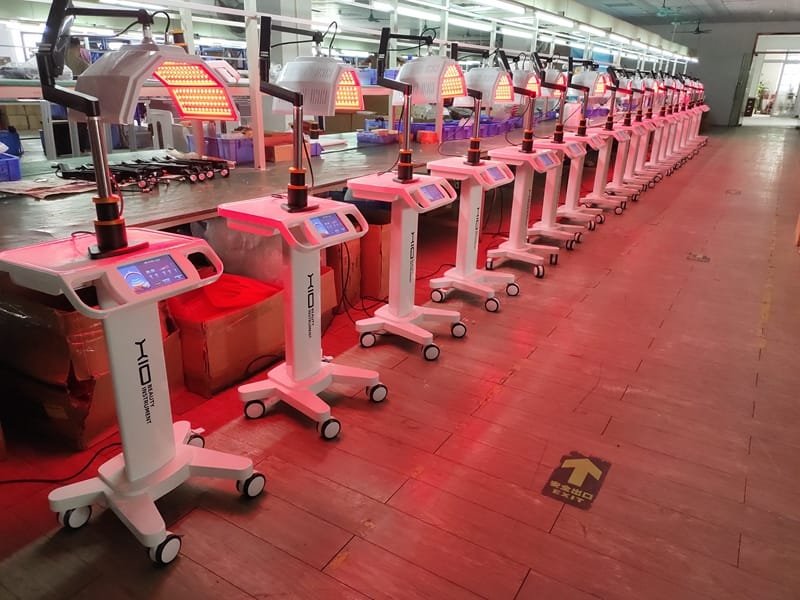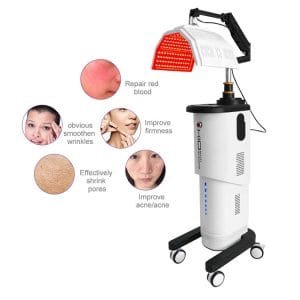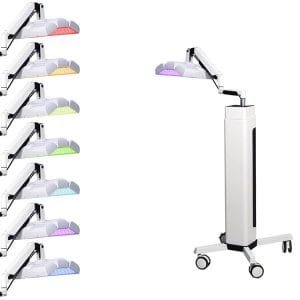Benefits of PDT Light Therapy Device
Enquiry Now!
PDT light therapy device has revolutionized the field of skin rejuvenation and medical aesthetics. This article explores the history, working principle, advantages, steps, target users, and application industries of PDT light therapy devices.
PDT (Photodynamic Therapy) light therapy devices have been used in medical and aesthetic fields since the 1990s. Initially, they were primarily used in dermatology to treat various skin conditions, including acne, psoriasis, and skin cancers. Over the years, advancements in technology have made PDT light therapy devices more versatile and user-friendly.
Working Principle
PDT light therapy devices use a combination of specific wavelengths of light and photosensitizing agents to activate a therapeutic response in the skin. The photosensitizing agent is applied to the skin, which is then exposed to the light emitted by the device. This interaction triggers a biochemical reaction, leading to the desired therapeutic effect.
Advantages
- 1. Non-invasive: PDT light therapy devices do not require surgical procedures, making them a safe and painless treatment option.
- 2. Versatile: They can effectively treat a wide range of skin conditions, including acne, wrinkles, hyperpigmentation, and rosacea.
- 3. Minimal downtime: Unlike other invasive procedures, PDT light therapy requires minimal downtime, allowing individuals to resume their daily activities immediately after treatment.
- 4. Suitable for all skin types: PDT light therapy is suitable for all skin types, including sensitive skin, as it does not cause damage or irritation.
- 5. Stimulates collagen production: The therapy stimulates collagen production, leading to firmer and more youthful-looking skin.
- 6. Safe and effective: PDT light therapy has a proven track record of being safe and effective in improving various skin conditions.
Procedure
The PDT light therapy procedure typically involves the following steps:
- 1. Cleansing: The skin is thoroughly cleansed to remove any impurities or makeup.
- 2. Application of photosensitizing agent: The photosensitizing agent is applied to the treatment area.
- 3. Waiting period: Depending on the specific treatment, a waiting period is observed to allow the photosensitizing agent to penetrate the skin.
- 4. Light exposure: The PDT light therapy device is placed close to the skin, and the appropriate light is emitted for the required duration.
- 5. Post-treatment care: After the treatment, the skin may be cooled or moisturized as per the individual’s requirements.



Target Users
- 1. Individuals with acne or acne-prone skin
- 2. Those with hyperpigmentation or uneven skin tone
- 3. People seeking skin rejuvenation and anti-aging treatments
- 4. Patients with rosacea or other inflammatory skin conditions
- 5. Individuals with sun damage or photodamaged skin
- 6. Those looking for a non-invasive alternative to traditional skin treatments
Application Industries
- 1. Dermatology clinics and aesthetic centers
- 2. Medspas and wellness retreats
- 3. Beauty salons and spas
- 4. Cosmetic surgery practices
- 5. Skincare product manufacturers or distributors
- 6. Rehabilitation and physical therapy centers
- 7. Sports medicine clinics
- 8. Research institutes and universities
- 9. Home users for personal skincare


Contact Get More Info About PDT Machine
PDT light therapy devices have a rich history and offer numerous benefits for individuals seeking skin rejuvenation and treatment of various skin conditions. Whether used in dermatology clinics, beauty salons, or even at home, these devices provide safe, non-invasive, and effective solutions. For more information or if you wish to become a local distributor or wholesaler, please contact us via email, WhatsApp, or leave a message.


Sale Cousultant : Mrs Lucy | Sale Consultant : Mr Mark |









